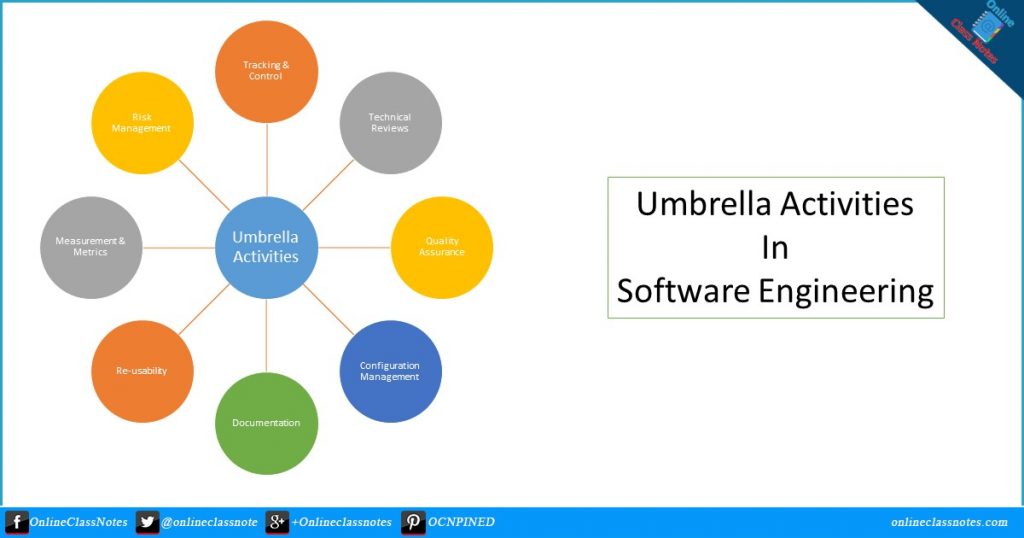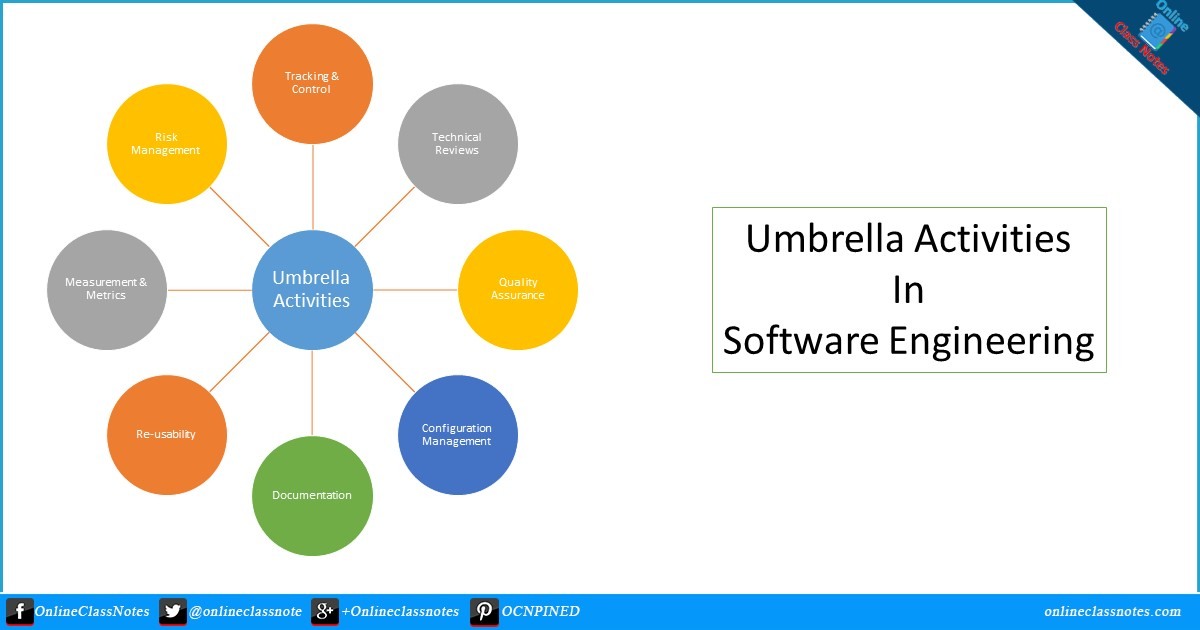Software engineering is a collection of co-related steps. These steps are presented or accessed in different approaches in different software process models. Umbrella activities are a set of steps or procedure that the software engineering team follows to maintain the progress, quality, change and risks of the overall development tasks. These steps of umbrella activities will evolve through the phases of generic view of software development.
Umbrella Activities in software engineering
- Software Project Tracking and Control
- Formal Technical Reviews
- Software Quality Assurance
- Software Configuration Management
- Document Preparation and Production
- Re-usability Management
- Measurement and Metrics
- Risk Management

Software Project Tracking and Control
Before the actual development begins, a schedule for developing the software is created. Based on that schedule the development will be done. However, after a certain period of time it is required to review the progress of the development to find out actions which are in need to be taken to complete the development, testing etc. in time. The outcome of the review might require the development to be rescheduled.
Formal Technical Reviews
Software engineering is done in clusters or modules, after completing each module, it is good practice to review the completed module to find out and remove errors so their propagation to the next module can be prevented.
Software Quality Assurance
The quality of the software such user experience, performance, load handling capacity etc. should be tested and confirmed after reaching predefined milestones. This reduces the task at the end of the development process. It should be conducted by dedicated teams so that the development can keep going on.
Software Configuration Management
Software configuration management (SCM) is a set of activities designed to control change by identifying the work products that are likely to change, establishing relationships among them, defining mechanisms for managing different versions of these work products.
Document preparation and production
All the project planning and other activities should be hardly copied and the production get started here.
Re-usability Management
This includes the backing up of each part of the software project they can be corrected or any kind of support can be given to them later to update or upgrade the software at user/time demand.
Measurement & Metrics
This will include all the measurement of every aspects of the software project.
Risk Management
Risk management is a series of steps that help a software team to understand and manage uncertainty. It’s a really good idea to identify it, assess its probability of occurrence, estimate its impact, and establish a contingency plan that─ ‘should the problem actually occur’.
